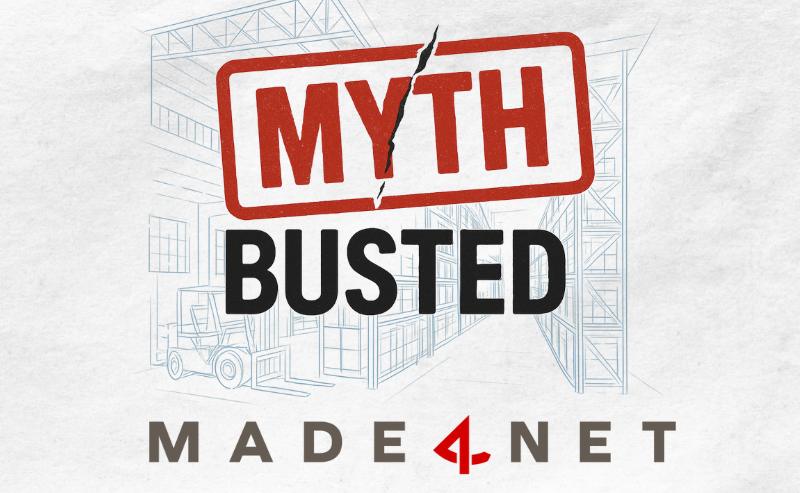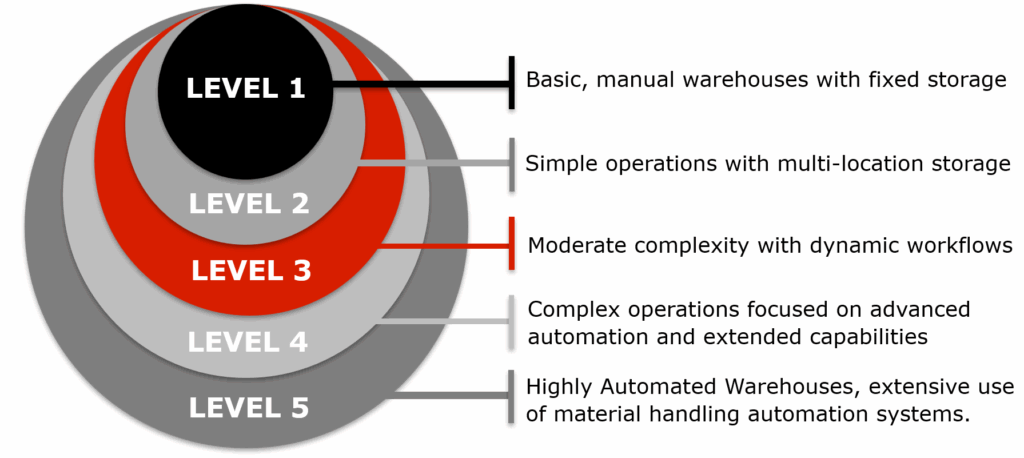
Let’s clear the air: Just because your operations span multiple warehouses with different levels of complexity doesn’t mean you need a patchwork of separate warehouse management systems (WMS). It’s a common misconception—one that often leads to fragmented processes, redundant technology, and increased IT overhead.
What you need is a single WMS platform that’s flexible enough to adapt to your entire operation—from basic, manual storage sites to highly automated distribution centers. The right system can support varied workflows, scale as your business grows, and bring consistency and visibility across all locations.
Understanding Warehouse Complexity Levels:
The first step in choosing an adaptable WMS platform that can handle multiple warehouses within your operations is identifying the complexity of your operations. Gartner’s Critical Capabilities for Warehouse Management Systems report defines five warehouse operation use cases, ranging from low to high complexity. Understanding this model can help you assess where your facilities stand today, where they are headed in the future and what WMS features and functions you require.

- Level 1: Basic, manual warehouses with fixed storage
- Level 2: Simple operations with multi-location storage
- Level 3: Moderate complexity with dynamic workflows
- Level 4: Complex operations focused on automation and extended capabilities
- Level 5: Highly automated warehouses with advanced material handling systems
According to Amit Levy, EVP of Sales and Strategy, Made4net, “It’s common for companies to have a mix of warehouse types. You might have a central distribution center operating at Level 4 complexity, while your satellite facilities are closer to Level 2. That’s not unusual—in fact, it’s the norm.”
So Can a Single WMS Handle My Entire Network?
Can a single WMS handle multiple levels of complexity? “Absolutely,” says Levy. “You don’t need separate systems to manage each facility. With the right WMS, you can configure the same platform to support a wide range of operational needs—from simple workflows in Level 2 sites to complex automation and analytics in Level 4 environments.”
By standardizing on one flexible system, you set your operations up for scalability, efficiency, and easier management—no matter how complex or diverse your network becomes. Don’t let perceived complexity become a roadblock. A flexible WMS is not just about features—it’s about finding the right system that can support your current range of complexity and scale seamlessly as your operations grow and diversify.
If you’re looking for a solution with balanced strength across the board, Made4net is the only system to score 3.0 or higher in all five Warehouse Operation Use Cases in the 2025 Gartner Critical Capabilities for Warehouse Management Systems report. We’d love to show you more.
Disclaimer:
Gartner, Critical Capabilities for Warehouse Management Systems, Rishabh Narang, Simon Tunstall, Dwight Klappich, Federica Stufano, 28 May 2025
GARTNER is a registered trademark and service mark of Gartner, Inc. and/or its affiliates in the U.S. and internationally, and MAGIC QUADRANT is a registered trademark of Gartner, Inc. and/or its affiliates and are used herein with permission. All rights reserved.
Gartner does not endorse any vendor, product or service depicted in its research publications and does not advise technology users to select only those vendors with the highest ratings or other designation. Gartner research publications consist of the opinions of Gartner’s research organization and should not be construed as statements of fact. Gartner disclaims all warranties, expressed or implied, with respect to this research, including any warranties of merchantability or fitness for a particular purpose.


